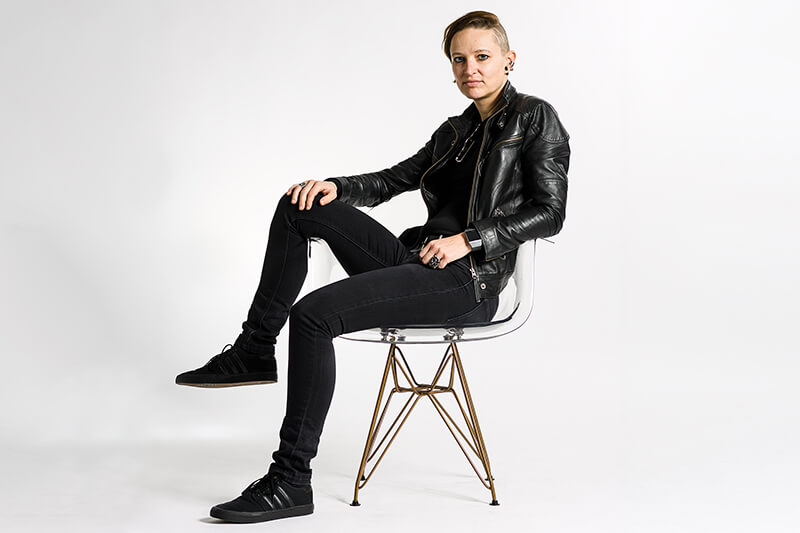Purdue University issued the following announcement on June 16
No satellite stays the same once launched into space. How much it changes can go unnoticed – until something bad happens.
Carolin Frueh is among only a handful of researchers who have persisted in using a complex technique that can diagnose a problem from thousands of miles away based on how the satellite reflects sunlight.
“While you’re driving a car, you can’t get out of the car to check if something has fallen off or gotten damaged. But you know that there might be a problem,” said Frueh (pronounced “free”), an assistant professor in Purdue University’s School of Aeronautics and Astronautics.
“An operator might notice that a satellite is unstable or not charging properly. An outside perspective can tell if it’s because something broke off, or if a panel or antenna is not properly oriented, for example.”
Not diagnosing the problem increases chances of losing or not being able to reestablish communication with the satellite. When communication is lost, a satellite could become pieces of debris that stay in space for hundreds of years or indefinitely unless actively removed.
This “space junk” poses a danger to other spacecraft. There are about 100,000 pieces of debris larger than a penny orbiting Earth, according to a U.S. Strategic Command database.
Space is a vacuum that immediately puts stress on a satellite. Constant transitions between the deep cold of Earth’s shadow and the extreme heat of the sun also take a toll over time.
“You know everything about a satellite when it’s on the ground. But that configuration changes because, to carry the satellite up, parts of it need to be folded in. Once in space, you want the panels unfolded, stably oriented toward the sun and the antenna pointed toward Earth,” Frueh said.
“The longer a satellite is out there, the less you know about it.”
Satellites are almost always illuminated by the sun, apart from short transitions to Earth’s shadow. The light that a satellite reflects can help reveal the solution to a structural malfunction.
The method calls for using telescopes on Earth to collect the light reflected by a satellite or one of its parts. Because satellites are far away, these objects might simply appear as white dots even on a telescope image, similar to stars on a night sky.
Changes in the brightness of a “dot” over time are recorded as light curves. These light curves are then processed and used to extract information about an object’s appearance or rotational state.
Light curves could be a less expensive and more practical way to identify satellite problems compared with radar. While radar can get a more detailed image of a satellite if conditions are favorable and the satellite is at low altitudes, light curves can provide information no matter how far away the satellite is from Earth’s surface. Light curves also passively rely on sunlight, whereas radar actively illuminates an object to make it visible.
The more complex an object is, the harder it is to estimate or solve for what the object looks like using light curves. The results also can be ambiguous; what if a satellite component just looks broken because it’s casting a shadow on itself?
Identifying and characterizing human-made objects with light curves is so mathematically complex that more researchers, instead, use the technique to study asteroids. As natural bodies, asteroids have less diverse materials on the surface and fewer sharp edges, making the math somewhat simpler.
But even partial answers from light curves could provide valuable information about a satellite.
In 2015, Frueh’s lab observed a mystery object known simply as “WT1190F” using the Purdue Optical Ground Station telescope. She and her collaborators discovered from light curves and associated modeling that the object was almost certainly human-made and a likely candidate for a piece of “Snoopy,” a missing Apollo 10 lunar module. The mission was part of a test run ahead of the Apollo 11 landing in 1969, when Neil Armstrong walked on the moon.
A team of astronomers confirmed that the findings suggested the object came from Snoopy. Successes like these show that improving space object identification with light curves might be worth the struggle. (The discovery is even cited in the Wikipedia entry for WT1190F.)
“It matters when we can say with 80% certainty what an object is, even though getting that answer can be extremely difficult. It would be far less helpful, but easier, to give a hundred different answers for what an object is, all with about 1% probability,” Frueh said.
Frueh’s lab is working on improving the likelihood that a light curve successfully identifies and characterizes both simple and complex space objects.
The goal is that in five to 10 years, the technique could not only reliably assist a satellite operator, but also provide full shape and rotation models even when no information or guesses about the object are available. These models would more clearly show the different surface materials and sharp edges of satellites, making them easier to identify.
With funding from the Air Force Office of Scientific Research, Frueh is developing ways to use light curves to increase knowledge of human-made objects in the absence of information from a satellite operator.
Information that light curves provide about satellites also could improve how they are designed in the future. Frueh’s lab has identified objects orbiting Earth that appear to be the gold foil of satellites flaking off over time. These flakes could dangerously create tiny objects that are difficult to track.
“The whole idea is improving space situational awareness,” Frueh said.
Original source can be found here.

Source: Purdue University



 Alerts Sign-up
Alerts Sign-up